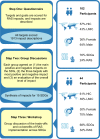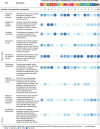Meeting sustainable development goals via robotics and autonomous systems
- PMID: 35729171
- PMCID: PMC9211790
- DOI: 10.1038/s41467-022-31150-5
Meeting sustainable development goals via robotics and autonomous systems
Abstract
Robotics and autonomous systems are reshaping the world, changing healthcare, food production and biodiversity management. While they will play a fundamental role in delivering the UN Sustainable Development Goals, associated opportunities and threats are yet to be considered systematically. We report on a horizon scan evaluating robotics and autonomous systems impact on all Sustainable Development Goals, involving 102 experts from around the world. Robotics and autonomous systems are likely to transform how the Sustainable Development Goals are achieved, through replacing and supporting human activities, fostering innovation, enhancing remote access and improving monitoring. Emerging threats relate to reinforcing inequalities, exacerbating environmental change, diverting resources from tried-and-tested solutions and reducing freedom and privacy through inadequate governance. Although predicting future impacts of robotics and autonomous systems on the Sustainable Development Goals is difficult, thoroughly examining technological developments early is essential to prevent unintended detrimental consequences. Additionally, robotics and autonomous systems should be considered explicitly when developing future iterations of the Sustainable Development Goals to avoid reversing progress or exacerbating inequalities.
© 2022. The Author(s).
Conflict of interest statement
The authors declare no competing interests.
Figures




References
-
- United Nations. Transforming our world: the 2030 agenda for sustainable development. (United Nations, 2015).
-
- Pradhan P, Costa L, Rybski D, Lucht W, Kropp JP. A Systematic Study of Sustainable Development Goal (SDG) Interactions. Earth’s Futur. 2017;5:1169–1179. doi: 10.1002/2017EF000632. - DOI
-
- Scheyvens R, Banks G, Hughes E. The Private Sector and the SDGs: The Need to Move Beyond ‘Business as Usual’. Sustain. Dev. 2016;24:371–382. doi: 10.1002/sd.1623. - DOI
-
- Blicharska, M. et al. Biodiversity’s contributions to sustainable development. Nat. Sustainability10.1038/s41893-019-0417-9 (2019).

